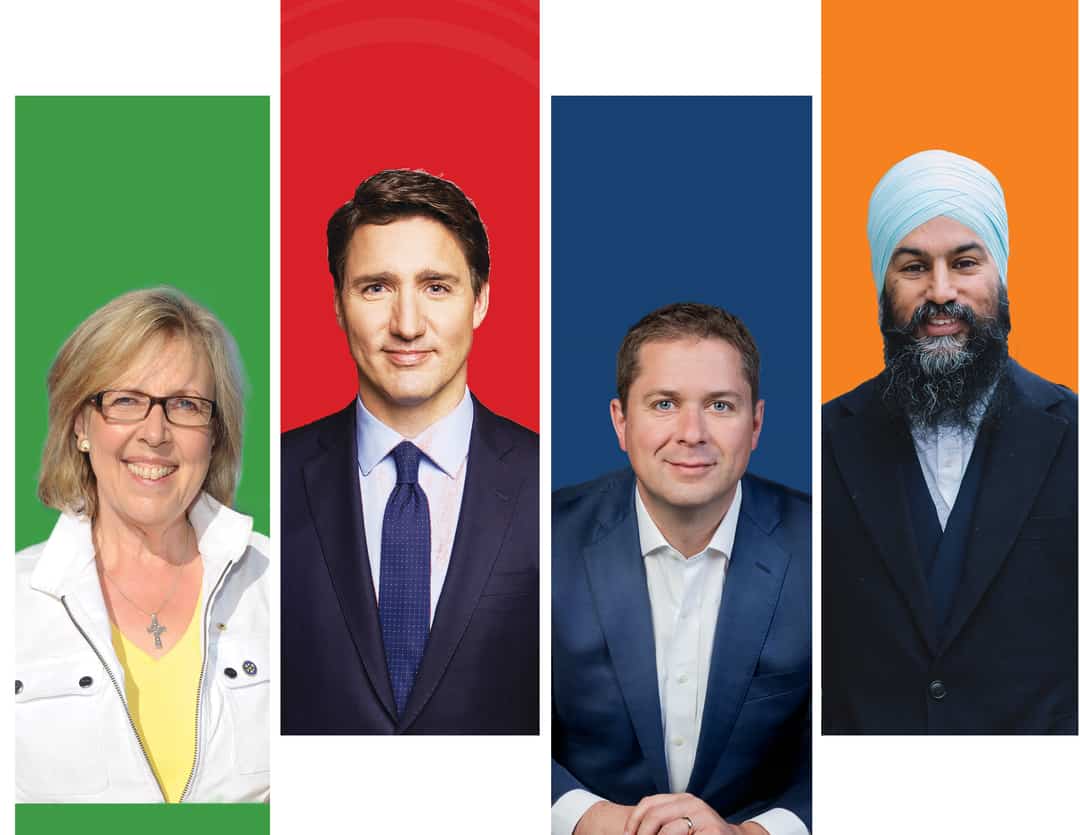The federal elections are an opportunity for Canadians to shape a government that is able to make substantive changes in order to tackle the climate crisis.
The rise of movements like Fridays for the Future is a response to government inaction in regards to the climate crisis, the severity of which was brought to light by the United Nations’ (UN) 2018 Intergovernmental Panel on Climate Change.
To keep global warming levels below 1.5 degrees celsius, we must reduce our net carbon emissions to zero by 2050 — a monumental task. Avoidance is not an option if we want to achieve this goal.
The Green Party is the only party that has a plan to address climate change in a meaningful way. The Green Party would ensure emission reductions of 60 per cent below 2005 levels by 2030. The NDP does not give an official estimate, but when the math is done, it comes to around 38 per cent below 2005 levels, which is almost at the 40 per cent requirement if we want to be on track to hit net zero by 2050. The Conservatives and Liberals both have the same target of 30 per cent below 2005 levels. However, the Conservatives have little chance of reaching these levels with their current policy proposals.
A strong environmental platform is not the only reason to consider voting Green. The Greens have a plan for pretty much anything you can think of. Here are a few reasons I decided to get involved and start the Young Greens at UTM.
Access to education is still impeded by the price of postsecondary education. The financial burden of accumulating student debt affects postsecondary academic choices, but it does not have to be this way. Elizabeth May and the Green Party would work toward solving this problem by eliminating tuition fees for Canadian students and forgiving federal student debt.
A national pharma care plan is an essential part of any health care system. Being unable to afford medication leads to hundreds of preventable deaths each year. Last year over 700,000 Canadians borrowed money to cover their prescription drug costs.
Not only would national pharma care lift a burden off numerous families in Canada, but it could also save the government money. By renegotiating and using our combined buying power as a country, we can obtain medication at a fraction of its current cost.
As a settler-colonial state, Canada has a lot to dismantle regarding the colonial policies and structures which remain present in policy, infrastructure, education, and amongst many inadequate social systems. With legislation such as the Indian Act, geographic barriers to education, access to clean water, inadequate housing and higher incarceration rates, working toward truth and reconciliation is an effort that must continue in earnest.
The Green Party of Canada would re-introduce legislation to embed the UN Declaration of Indigenous Rights into the law. The party plans to work in partnership with First Nations groups to dismantle the Indian Act by establishing self-governance — but only with freely given and informed consent. Bringing an end to boil water advisories, and respecting court’s rulings on matters such as compensation due to child welfare disparities are key aspects of the Greens’ vision and understanding of reconciliation.
The Green Party will redirect funding for these social projects by closing loopholes that allow Canadians to operate offshore bank accounts in tax havens. In addition, we the Greens will ask virtual giants like Netflix and Amazon to pay their fair share of taxes, and will end fossil fuel subsidies and corporate tax breaks. There are means of funding available; it’s just a matter of where we direct it.
In the fight against climate change, the transition to a green economy is essential. This plan must include everyone, from First Nations peoples to oil and gas workers. Canada’s economy must adopt fair and sustainable practices. Transitioning our economy toward sustainable energy must take into consideration workers who will be affected by these job changes. The Green Party hopes to work closely to create jobs in the renewable energy sector and to help workers transition into these new roles.
Young voters make up the largest voting bloc in Canada. If you do not know where to start, CBC’s Vote Compass gives a good overview of the party platforms. There, you can take a quiz that aligns your beliefs with the party that most closely shares your positions. To check for your voter registration status, consult the Elections Canada website.
Our future, whatever you want it to look like, depends heavily on the outcome of this election. We have 11 years to take meaningful action on climate change and for that to happen, we must implement measures immediately. No other party is as dedicated to confronting the climate crisis as we are. Students, voters, keep this in mind when you cast your vote. The Greens are not afraid to make unprecedented strides toward meaningful change.
Katya Godwin is a first-year Life Sciences student at UTM. She is the president of the Young Greens at UTM.


